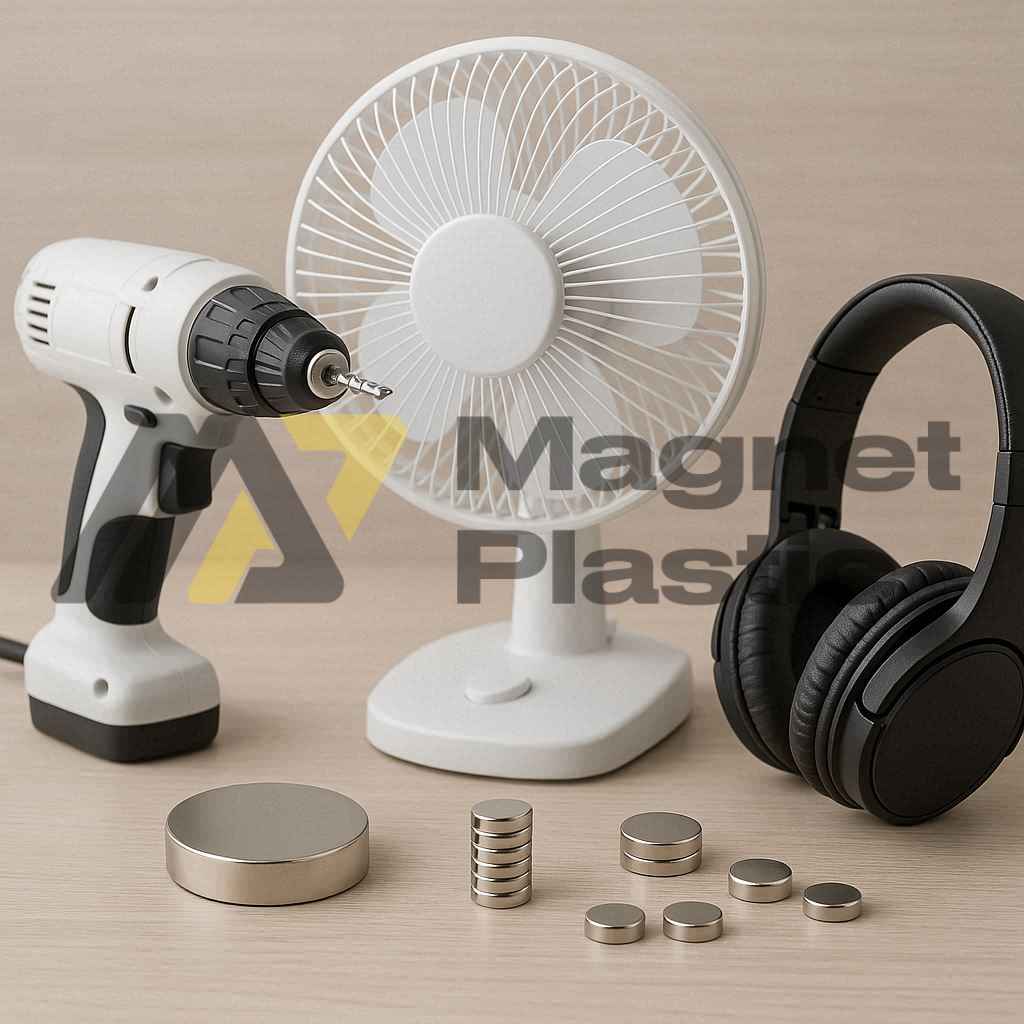Applications of Neodymium Magnets in Electrical Devices
Neodymium magnets, made from an alloy of neodymium, iron, and boron (NdFeB), stand out for their exceptional magnetic strength and versatility. Thanks to their high power, durability, and ability to be manufactured in various shapes and sizes, they have become essential components in a wide range of electrical devices and everyday applications.
Use in Audio Equipment
One of the most important areas where neodymium magnets are used is in the audio industry. Speakers, headphones, and microphones all rely on these magnets to produce high-quality sound. In speakers, a fixed magnet and a mobile electromagnetic coil work together: when electrical current flows through the coil, it is attracted and repelled by the magnet, generating vibrations that transform into sound waves. Microphones work in the opposite way: air vibrations move the coil within a magnetic field, producing an electrical signal that is reproduced as sound.
Applications in Electric Toys
Neodymium magnets are also found in electric toys, from remote-controlled cars and planes to dolls and plush toys with internal mechanisms. Their small size and high power allow them to be integrated into miniature motors and movement systems, making these toys more dynamic.
Presence in GPS Systems and Robotics
In portable GPS devices and equipment installed in vehicles, neodymium magnets are used in precise internal components. In robotics, they play a key role in motion control and sensor systems, ensuring efficient and reliable operation in automated processes.
Other Uses in Everyday Life
Neodymium magnets are used in many applications ranging from medicine to decoration:
- Magnetic Resonance Imaging (MRI).
- Magnetotherapy.
- Levitation systems and heavy load handling.
- Trade show displays and signage.
- DIY projects, wall decor, and office supplies.
- Jewelry with magnetic clasps.
Applications in Locks, Motors, and Generators
In commercial environments, neodymium magnets are commonly used in magnetic locks for fire doors, ensuring a secure and reliable closure.
In electric motors, they convert electrical energy into mechanical energy through interaction with electromagnets. In generators, the process is reversed: mechanical energy is transformed into electricity by moving a conductor within a magnetic field.
Industrial and Advanced Technological Use
In the industrial sector, neodymium magnets play a crucial role in automation, robotics, and motion sensors. They are also used in escalator motors, wind turbines, MRI equipment, and in the aerospace industry, where high power and reliability are essential.
Conclusion
Neodymium magnets are found in a wide variety of electrical devices and industrial systems. From household and leisure applications to advanced technology, their power and versatility make them an essential component of modern life.
Pregunta-li a ChatGPT
